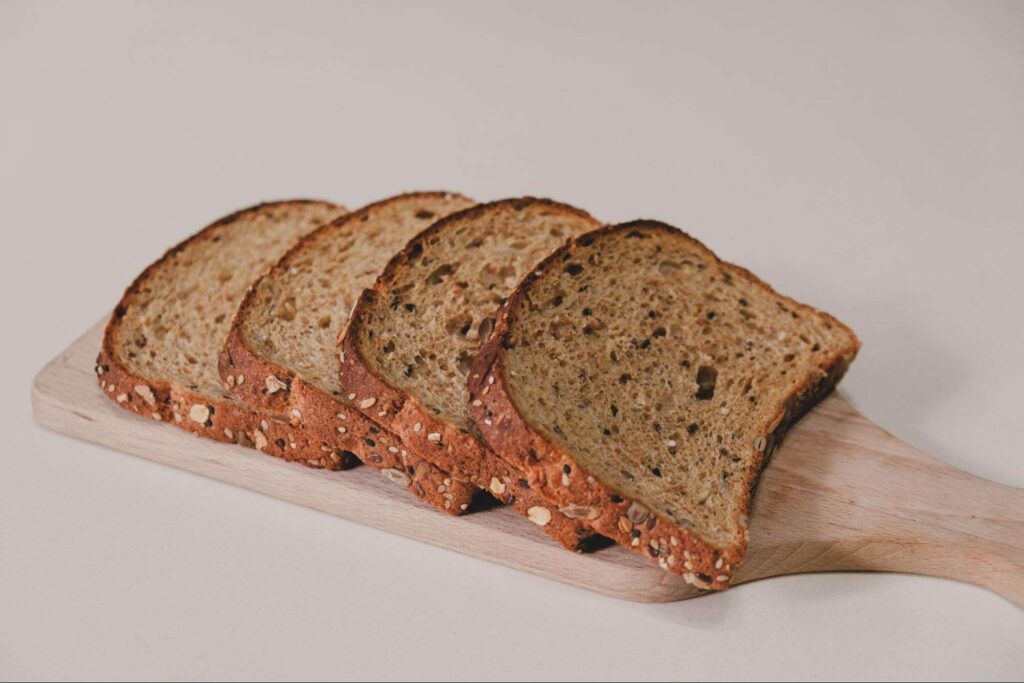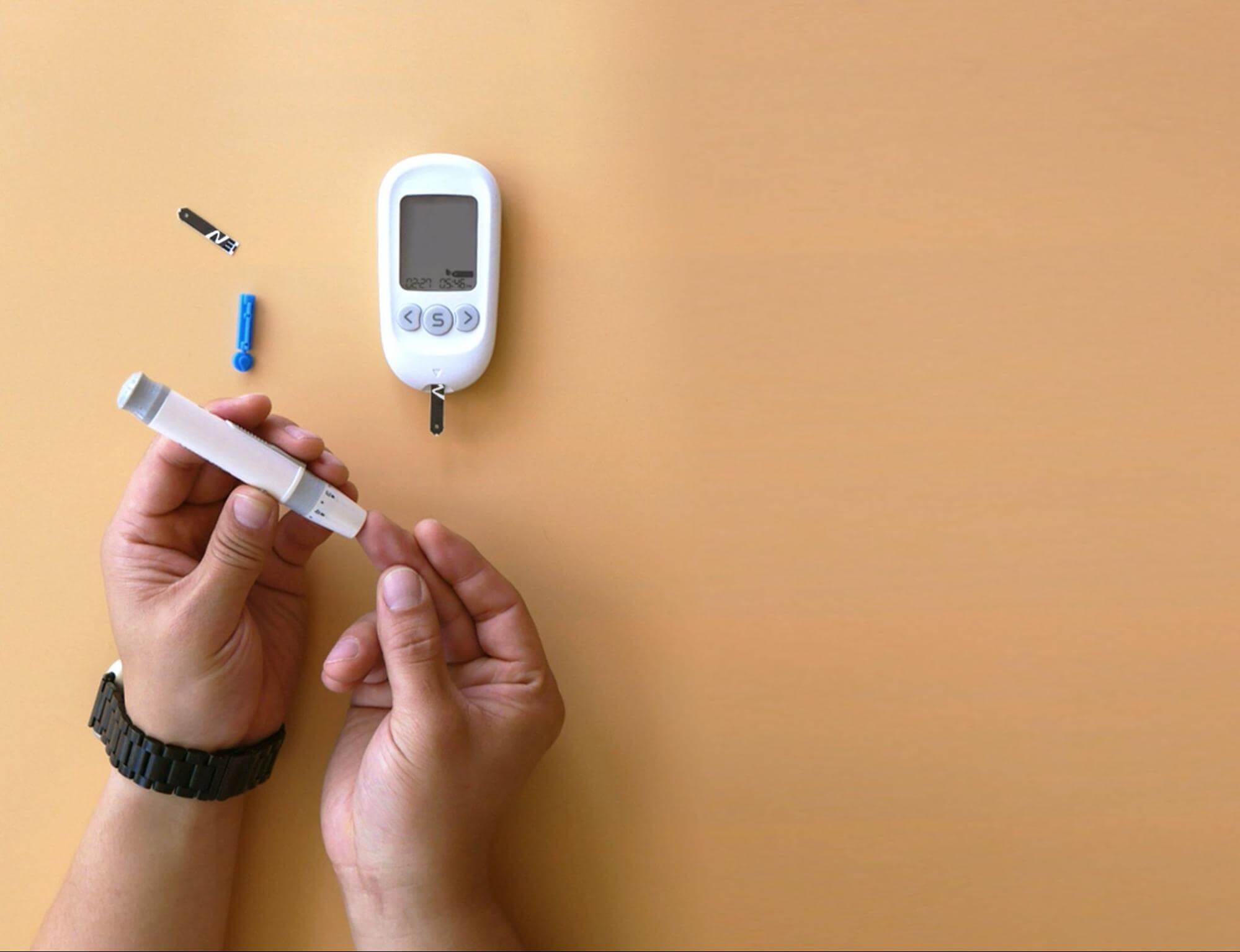Our bodies require glucose, a form of sugar, for energy. Carbohydrates are broken down into glucose after a meal, which enters the circulation. The pancreas secretes insulin, a hormone that unlocks cells and allows glucose to enter for energy synthesis.
This system works well in healthy people, maintaining blood sugar levels within a reasonable range. However, in those with prediabetes or diabetes, this mechanism fails, resulting in high blood sugar levels.
What is Hyperglycemia?
Hyperglycemia is characterized by unusually high blood sugar levels. Fasting blood sugar levels in non-diabetics should ideally be less than 100 mg/dL and less than 140 mg/dL two hours after a meal. Individual variables and medical history might cause these thresholds to differ somewhat. Hyperglycemia is defined by chronically increased blood sugar levels that surpass specific thresholds.
Hyperglycemia can be managed with blood sugar-lowering strategies. It is critical for people, especially those with diabetes, to periodically check their blood sugar levels. Consulting with healthcare specialists, such as those at the American Diabetes Association, can give personalized advice to avoid sugar spikes and their consequences.
10 Effective Ways to Lower Blood Sugar
1. Regular Exercise

Regular physical exercise is essential for blood sugar control. Exercise improves insulin sensitivity, making cells more receptive to insulin and allowing them to absorb glucose more efficiently.
Exercising regularly also helps reduce the risk of cardiovascular complications related to diabetes.
Get 30 minutes of moderate physical activity every day. Brisk walking, swimming, cycling, or other aerobic workouts may be included.
Muscle insulin sensitivity is improved by strength training. Aim for two to three strength sessions each week.
Take activity breaks every 30 minutes to break up inactive time. Even light movement, such as stretching or strolling around, is beneficial.
2. Weight Loss
Excess weight, particularly around the belly, can develop insulin resistance, resulting in elevated blood sugar levels. Decreasing 5-10% of your body weight will help you regulate your blood sugar and reduce the risk of heart disease.
- Aim for 1-2 pounds of weight loss each week through a mix of food and activity. Here are some weight-loss techniques that are both safe and effective:
- Reduce your calorie consumption by 500-1000 calories each day. Calculate your maintenance calories using a calorie monitoring app or an internet calculator, then deduct 500-1000 calories.
- To help moderate hunger, eat non-starchy veggies, lean meats, and high-fiber meals.
- Engage in at least 30 minutes of moderate activity most days of the week. Begin slowly with walking, swimming, or any other aerobic activity you love.
- Lift weights or conduct bodyweight workouts 2-3 times weekly to increase muscle mass and burn calories.
- Get enough sleep and control your stress, since both of these factors might raise hunger hormones.
- Drink lots of water and avoid sugary drinks like soda and juice.
- Weekly weigh yourself and take body measurements to track your progress.
3. Reduce Carb Intake
Carbohydrates are the primary foodstuffs that cause blood sugar to rise. Restricting carbohydrates can directly reduce blood glucose levels and protect your blood vessels from damage.
The daily carbohydrate consumption advised for blood sugar management is less than 130g. Carbohydrates should be obtained mostly from vegetables, fruits, legumes, and whole grains. Avoid refined carbohydrates such as white bread, spaghetti, fizzy beverages, and prepackaged snacks.
Not all carbohydrates have the same effect on blood sugar. The glycemic index (GI) assesses how rapidly carbohydrates break down and elevate blood sugar levels. Low GI meals below 55 steadily increase, but high GI foods beyond 70 cause a fast jump.
Eating more low-glycemic meals can help enhance insulin sensitivity and keep blood glucose levels steady. Non-starchy veggies, beans, lentils, nuts, seeds, berries, yogurt, and oats are all good choices. High glycemic foods to avoid include potatoes, white rice, white bread, sugary cereals, and sweets.
A low-carb diet of less than 130g per day has been demonstrated to reduce HbA1c and fasting blood sugar in patients with diabetes. Among the benefits of low carb diets are:
- Blood sugar increases after meals are reduced.
- Insulin sensitivity has improved.
- More consistent energy levels and less cravings
- Possible weight reduction decreases blood glucose even further and reduces the risk of long-term complications.
- Monitoring overall carbohydrate consumption and selecting low glycemic choices can considerably decrease average blood sugar.
4. Increase Fiber

Fiber is an essential ingredient that can aid with blood sugar control. Fiber is classified into two types: soluble and insoluble.
Soluble fiber dissolves in water to form a gel-like substance in the gut. It helps slow digestion and the absorption of nutrients like glucose. Soluble fiber is found in oats, beans, lentils, apples, citrus fruits, and carrots.
Insoluble fiber It does not dissolve in water and adds volume to the feces. It hastens digestion and aids in the passage of food through the intestines. Whole grains, bran, almonds, cauliflower, potatoes, and tomatoes all contain insoluble fiber.
Increasing fiber consumption, particularly soluble fiber, can help reduce blood sugar rises after meals. Fiber reduces sugar absorption in the circulation, reducing blood glucose rise. Fiber also keeps you fuller for longer, which reduces your appetite and overall calorie consumption.
Some high-fiber foods to include in your diet are:
- Oatmeal
- Lentils with beans
- Seeds and nuts
- Brown rice and whole wheat bread are examples of entire grains.
- Berries, apples, and pears are examples of fruits.
- Broccoli, carrots, and artichokes are examples of vegetables.
Aim for 25-30g of fiber from high-fiber meals each day. Drink lots of water to help fiber digestion. Gradually increase your fiber intake to avoid gas and bloating. Increasing fiber consumption can dramatically improve blood sugar management.
5. Intermittent Fasting

Intermittent fasting includes cycling between eating and fasting intervals. According to research, this approach can enhance insulin sensitivity and reduce blood sugar levels, especially in people with prediabetes or type 2 diabetes. However, before attempting any fasting regimes, you should contact your doctor.
6. Stress Management
Stress increases the production of chemicals such as cortisol and adrenaline, which can boost blood sugar levels. When you are anxious, your body enters fight or flight mode, producing glucose to provide you with immediate energy.
Chronic stress keeps your blood sugars up even when you aren’t in imminent danger. Finding techniques to manage and minimize stress can aid in blood sugar stabilization.
Relaxation Tips
Several relaxation techniques may be used to reduce cortisol levels and counteract the stress response:
- Deep breathing activates your parasympathetic nervous system, causing it to relax. When you’re stressed, try 5-10 minutes of deep breathing.
- Mindfulness meditation educates your mind to be present and calm. Even 5-10 minutes of daily exercise can reduce blood sugar and stress chemicals.
- Gentle yoga positions massage and soothe the body’s interior organs. Yoga is also excellent for increasing circulation.
- Visualizing calming imagery relieves stress. Listen to a guided meditation or picture yourself in your happy spot.
- Progressive muscular relaxation – Interrupting the stress response by tensing and relaxing muscle units.
Stress reduction requires work, which is necessary for blood sugar balance and overall wellness. Start
7. Get Enough Sleep
Getting adequate sleep feels great and is essential for overall health.
In reality, poor sleeping patterns and a lack of rest can have an impact on blood sugar levels and insulin sensitivity, raising the risk of developing type 2 diabetes. They can also stimulate hunger and cause weight gain.
Furthermore, sleep loss elevates hormone cortisol levels, which, as previously stated, plays an important role in blood sugar regulation.
8. Drink Plenty of Water
Staying hydrated is essential for general health and blood sugar regulation.
According to 2023 research, people who stay hydrated tend to be healthier, suffer fewer chronic diseases, and live longer than those who do not take enough fluids.
Hydration may also help with blood sugar management. A 2021 study discovered an inverse link between water intake and the incidence of type 2 diabetes, implying that a higher intake reduced the risk.
Drinking enough water allows your kidneys to remove extra sugar from your system. Aim for eight glasses of water daily, adjusted for activity and environment.
9. Take Short Walks After Meals

A short stroll after meals will help reduce blood sugar rises. Walking also enhances the efficiency with which insulin removes sugar from your blood.
A 2022 study divided 21 healthy young volunteers into two groups to examine the effects of walking. The first group went on brisk 30-minute walks after meals with varying levels of carbs. After consuming a mixed lunch or a high-carbohydrate drink, another group went for a 30-minute brisk walk. The researchers discovered that vigorous walking significantly lowered both groups’ post-meal blood sugar peak.
Aim for at least 10-15 minutes of light exercise to boost glucose absorption into your cells.
10. Medications
If lifestyle modifications alone are insufficient to lower your blood sugar levels, see your doctor about medicinal therapies that may be available. To assist in reducing and regulating blood sugar levels, the following drugs can be prescribed:
Metformin: Is the most widely given type 2 diabetes medication. It works by decreasing glucose synthesis in the liver and increasing insulin sensitivity in the body.
Sulfonylureas: Increase the secretion of insulin from the pancreas. Glyburide, glipizide, and glimepiride are a few examples.
Meglitinides: They boost pancreatic insulin secretion as well, but work faster than sulfonylureas. Examples include repaglinide and nateglinide.
Thiazolidinediones (TZDs) Pioglitazone and rosiglitazone, for example, make muscle and fat cells more insulin sensitive.
DPP-4 inhibitors: These medications can help lower blood sugar levels by preventing the breakdown of incretin hormones in the intestines. Sitagliptin, saxagliptin, and linagliptin are often given.
GLP-1 receptor agonists: Only when blood sugar levels are high is insulin released. Exenatide and liraglutide are two regularly used medications.
SGLT2 inhibitors prevent glucose reabsorption in the kidneys, causing excess glucose to be excreted in the urine. Examples include canagliflozin, dapagliflozin, and empagliflozin.
Insulin therapy If your body cannot create enough insulin, medication may be required. Your doctor can help you develop an efficient insulin plan.
Conclusion
Achieving and maintaining appropriate blood sugar levels is a complex procedure that includes lifestyle changes, food decisions, and regular monitoring.
By implementing these eight practical methods into their everyday lives, individuals may take proactive actions to lower blood sugar naturally and lessen the risk of consequences linked with hyperglycemia. It is essential to get tailored guidance and continuing assistance from healthcare specialists to manage blood sugar levels properly.
If you enjoyed this article, you may also want to read this article on Natural Treatments for Diabetic Neuropathy.
*This information is not intended to serve as a substitute for professional medical or dietary advice tailored to individual needs.
Po-Chang Hsu, M.D., received his medical doctorate from Tufts University School of Medicine in Boston. During his medical school training, Dr. Hsu worked with various patients, including adult and pediatric patients with acute and chronic conditions. Dr. Hsu’s interests include neurology, psychiatry, pediatrics, and sleep medicine.
Before medical school, Dr. Hsu finished a master’s degree at Harvard University and wrote a thesis on neuroimaging in schizophrenia patients at Brigham and Women’s Hospital, a Harvard Medical School-affiliated hospital. Dr. Hsu was also a part of the 2008 NASA Phoenix Lander Mission team, which sent a robotic spacecraft to the North polar region of Mars. Dr. Hsu also had research experience on neuroimaging in neonates at Boston Children’s Hospital, another Harvard Medical School-affiliated Hospital.
Since graduating from medical school, Dr. Hsu has worked as a full-time medical writer and consultant. In addition, he has experience writing and ghostwriting books and articles for physicians and health technology start-up companies. Dr. Hsu believes good communication between healthcare providers and patients creates the best results.
Publications
-Peer Reviewed Journal Article:
Kounaves, S.P., Hecht, M.H., West, S.J., Morookian, J.-M., Young, S.M.M., Quinn, R., Grunthaner, P., Wen, X., Weilert, M., Cable, C.A., Fisher, A., Gospodinova, K., Kapit, J., Stroble, S., Hsu, P.-C., Clark, B.C., Ming, D.W. and Smith, P.H. The MECA wet chemistry laboratory on the 2007 phoenix mars scout Lander. Journal of Geophysical Research. 2009, Mar; 114(E3): 10.1029/2008je003084.
-Poster Presentation:
2011 Harvard Psychiatry Mysell Poster Session; Boston, MA
Hsu, P.C., Rathi, Y., Eckbo, R., Nestor, P., Niznikiewicz, M., Thompson, E., Kubicki, M., Shenton, M.E. (March, 2011). Two-Tensor Diffusion Tensor Imaging of Acoustic Radiations in Schizophrenia




